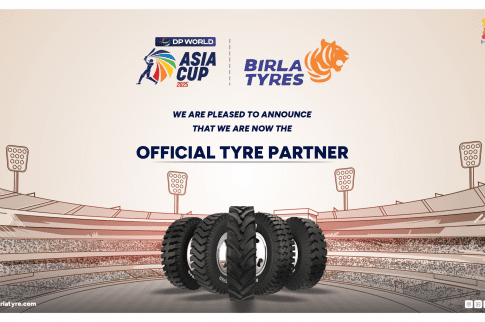How To Automate Campaign Content Publishing Using Headless CMS Workflows?

Table Of Contents
Marketing is taking place faster, and the demand for speed and efficiency is only increasing. With shorter campaign durations and more frequent requirements for personalized, omnichannel content, the ability to publish content for campaigns manually becomes an increasingly significant bottleneck that halts progress and stifles growth opportunities.
More teams are implementing a headless CMS to better engage with content and to automate the manual publishing of campaign-related content.
With structured content, an API-first approach to content delivery, and a headless CMS, teams can automate and rapidly publish campaign-related content across channels and platforms with limited human intervention. This is how to do marketing the right way faster.
How To Automate Campaign Content Publishing Using Headless CMS Workflows?
Standard CMS ecosystems require set designs, manual adjustments, and compartmentalized systems that are both time-consuming and prone to error. Ensuring a campaign launch is published on a website, mobile app, email newsletter, and social media channels involves recreating styles, copy/pasting, and human oversight across platforms.
This not only wastes time and budget but also creates multiple points of failure and postponed launches. Powered by Storyblok, brands can streamline this process through modular content delivery and real-time updates. When campaigns need to pivot in real-time, waiting on manual processes only complicates marketing agility.
Where Headless CMS Architecture Allows For The Possibility Of Automation?
A headless CMS facilitates content creation separate from presentation so that content can exist modularly and is distributed via APIs to whichever front-end or other system. This separation is what allows for automated opportunities.
When campaign assets live in a centralized, predetermined library with expected models and metadata, they can be automatically pulled and pushed to different places based on rules or triggers. This means that once the campaign asset is created, adjusted, vetted, and finalized, it can be sent to landing pages, mobile interfaces, email services, or in-app notifications without needing to be repeatedly published..
Content Structure Creates Assets That Are Easy To Use Across Campaigns:
The foundation of automation comes from a headless CMS in how content can be structured. Reusable content models, hero images, product cards, show announcements with associated metadata, and CTA allow for campaign content once created to publish everywhere.
These models are created with fields and metadata that dictate where/when/how the content will show up. Therefore, during the development of the campaign, all marketers need to do is fill out these templates with the up-to-date copy/assets. Then the automation process can handle the rest, pushing the content to where it needs to be based upon platform rules and user intent.
Automating Multi-Channel Delivery From A Single Source Of Truth:
Perhaps one of the most significant advantages of using a headless CMS is that it can be a single source of truth for all campaign content. Through API connections, it can automatically push structured content to any channel, a web application, e-commerce site, marketing automation platform, or CMS frontend.
For example, a digital promo banner created for a new product launch can exist on the corporate website home page, within the mobile app carousels, and as a published email, all at the same time, pulled from one source and published at the same time.
This minimizes the chances that misinformation exists across various channels, duplicate efforts occur, and time-to-launch for campaigns is expedited.
Workflow Automation For Approval Workflows:
Campaigns often require various approval levels before going live, as is necessary in many regulated environments. A headless CMS can provide workflow automation so that companies can establish content lifecycles defined through role-based permissions, status triggers, and collaborative review.
Content can flow through defined statusraft, review, approved, scheduled, and published with notifications sent to all involved when it’s time to action. Once approved, it goes live across all established channels with no manual intervention. This keeps quality safe while also ensuring teams remain on the same page and projects continue to move forward.
Scheduled Publishing For Ensured Timely Activation Of Campaigns:
Many modern marketing campaigns are constructed in such a way that publishing needs to happen at certain times, such as product launches, seasonal offerings, and time-sensitive promotions, and rely on adherence to planned workflows to ensure proper management.
A headless CMS enables scheduled publishing so that content can go live automatically at predetermined times.
So, whether a new collection should go live at 12 AM across all regions or a flash sale needs to go live instantaneously across various platforms at the same time, scheduled publishing functionalities allow this to happen without emergency response teams. This also allows for 24/7 functionality for global teams without having to pay extra staffing costs.
Campaign Content Goes Further With Automatic Personalization Engines:
The next level of automation is when headless CMS content happens simultaneously with personalization in real time.
Campaign content is ready to be personalized as it’s often built in a templated yet cohesive fashion; thus, when the CMS connects to personalization engines or customer data platforms (CDPs), it can be done automatically in real time for various subsets. The system can automatically serve a completely different campaign to different users.
Real-time offers, images, and CTAs can be streamlined based on user action, segment, or geolocation.
When automation and technology take care of such essential relevance to campaigns, marketers don’t have to create a million remixes of the same campaign; they can let the technology do it and automatically supply it to the user. This increases relevance, and better engagement and ROI.
Performance Assessment And Reporting Back Into The Workflow:
After all this work around a campaign to get it approved and launched, assessing whether it’s effective or not is critical. Many headless CMS integrations allow for performance assessment inside the channels, whether third-party analytics software is involved.
Then this data is recorded back into the workflow for further automation. If it doesn’t perform, it can be automatically flagged for review and unpublished; if it has a certain variation that’s performing better than others, that can be immediately published as the master version for all channels; or it can recommend adjustments based on performance feedback.
Similarly, with A/B testing solutions, the data can trigger certain new versions to go live automatically, creating an always-on campaign scenario that never sleeps.
Enabling Marketers To Work Smarter, Faster:
The keys to success are no redundancy and real-time publishing for headless CMS, as it simplifies a marketer’s life, allowing them to spend more time on creative strategizing and refinement, rather than wasting man-hours learning how to publish content effectively.
Teams can focus on appropriate messaging and generating new ideas. The ability to have consistent content feeds and automated processes makes raising a campaign much faster and easier. That way, verticals are more comfortable dipping their toes in expansion efforts across geographies and product lines. These operational efficiencies lead to faster time to market and a better competitive advantage.
Campaign Content Goes Further With Automatic Personalization Engines:
The most seamless form of automation, however, comes when headless CMS content occurs in conjunction with real-time personalization.
This is also true for campaign content, as much of it is generated in a templated, yet cohesive, fashion; thus, when the CMS connects to the personalization engines or customer data platforms (CDPs), it can happen automatically and in real-time for various sub-sets.
The system, for example, automatically gives another group of users an entirely different campaign. Real-time offers, images, and CTAs can be filtered based on user activity, user grouping, or geolocation.
When such significant relevance to campaigns can occur via automation and technology, marketers do not want to create a million remixes of the same campaign; they want technology to do it and present it, automatically, to the user. This creates relevance, engagement, and ROI.
Performance Assessment And Reporting Back Into The Workflow
It’s critical to evaluate whether it WORKS after such a strenuous effort surrounding a campaign to approve and implement. Many headless CMS integrations include the ability to evaluate within the channels whether external analytics software exists. Then that information is sent back to the workflow for continued automation.
So, whether it DOES NOT work, it can be automatically flagged for review and unpublished; if it has a certain variant that’s performing better, that can be automatically published as the master across channels; or it can indicate adjustments based on performance feedback. Similarly, with A/B Testing solutions, the analytics can automatically allow certain new variants to go live, operating a 24/7 campaign that never ends.
Enabling Marketers To Work Smarter, Faster:
No backup means no backup, and real-time publishing champions this methodology. When a headless CMS creates constant content and continual workflows, it makes a marketer’s life worthwhile because time can be better spent on creative, strategic endeavors instead of optimization.
It’s annoying for people to have to figure out how to publish what and where when messaging can be better planned for and ideated on.
With constant content and continual workflows, getting a campaign up and running is easier and faster, making verticals feel more at ease testing the waters for regional and categorical expansion. When everything is running super well, time to market can be faster with more effective placements against competition.
The Ability To Scale Campaigns Without Compounding Complications:
As companies grow and geographical or market expansion increases, the content for campaigns can become increasingly overwhelming. A headless CMS allows companies to scale campaign efforts without compounding complications. Because content is modular and exists in one central place that’s accessed across the organization via API, the ability for scaled content and channels is manageable without overwhelming internal teams. Automated publishing workflows ensure approvals, publishing, and revisions are addressed so that scaling doesn’t sacrifice quality or efficiency.
Cross-Departmental Collaboration With Role-Based Workflows And Visibility:
Campaign publishing is rarely a one-department effort. From marketing to content to design, and legal to dev, ensuring the right resources are in play requires cross-departmental collaboration. A headless CMS helps with collaboration due to role-based, visible workflows that keep everyone apprised of where the campaign is and how far it’s come. Approvals and feedback can take place within the headless CMS instead of email threads or disparate channels that create conflict or version-control issues. The more eyes, responsibility, and transparency there are, the better the content will be from draft to final publish.
Cultivating A Culture Of Continuous Delivery For Campaign Publishing:
The days of quarterly launches as a reliable marketing approach are over. Today, marketers utilize a culture of continuous delivery. Within a headless CMS, compounded by automated publishing workflows, teams can create a culture of constant campaign delivery efforts where content can be revised, published, and tested, all on a continuous basis.
This intent for authenticity can create relevance and foster a culture of change. Whether campaigns need to change seasonally based on prior learnings or real-time adjustments in the market, automation helps keep campaigns relevant and continuously on the go.
Future-Proofing Your Content Infrastructure For Evolving Campaign Needs:
Digital marketing is an ever-evolving field, and new channels, formats, and consumer interactions are constantly developing.
A headless CMS with automated publishing workflows provides the versatility and ability to expand to meet requirements and an evolving environment.
So, whether using advanced, developing technologies, creating campaigns on new platforms, or changing plans at a moment’s notice, this structure allows your content infrastructure to be agile to adapt to the needs of the evolving future.
Streamlining Campaign Delivery Through Headless CMS Automation
Campaigns need to be published at scale and rapidly across channels, platforms, and devices to maintain relevancy. Therefore, the ability to use workflows in a headless CMS to automate campaign content publishing is not just useful but required.
The longer the industry relies on a digitized, responsive day-to-day operation, the more the process by which a campaign can be published needs to adjust to such standards or get left behind.
Overall, as brands search for efficiencies to survive and thrive within their own marketplaces, a headless CMS is the type of integration not only required to publish but to publish faster with great dynamics and options they’ve never had before.
It’s not about what’s possible, offering more; it’s about what’s possible and then giving marketers the time to do more elsewhere with what’s previously held them back from greatness. When it’s possible to thrive across channels without issue, without needing to wait for public engagement, then the possibilities are endless.
As brands are poised to consider their options for growth, this is what digital excellence means, from logistics to implementation to responsive opportunities to create the new standard for engagement initiatives.
Read More:

























